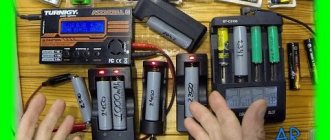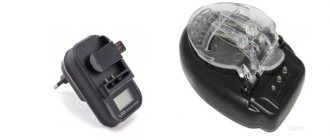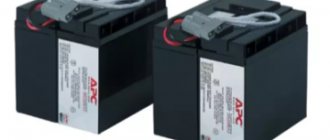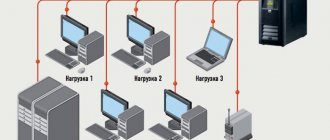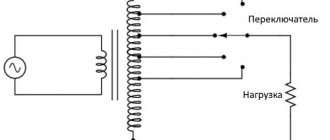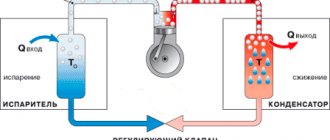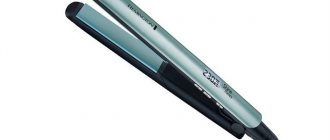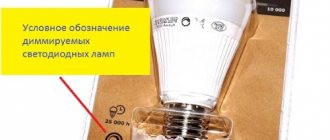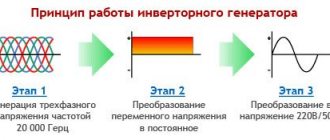The development of miniature electrical energy carriers has caused a rapid growth in the production of mobile electrical appliances and various gadgets. Along with ordinary disposable batteries, there is an urgent need for multi-charge cells of the same size. Mini rechargeable batteries not only made it possible to significantly increase the capacity of power supplies, but also brought significant cost savings on disposable energy carriers.
AA batteries
Application
How to distinguish a battery from a rechargeable battery
Rechargeable batteries can be found in power supplies for measuring instruments, cameras, game consoles, medical equipment, flashlights and many other household and civil products. Finger batteries can be connected in series, forming groups of several elements.
Important! In power boxes, batteries are arranged in rows. Each subsequent element is oriented with its poles in the opposite direction from the previous battery. This order cannot be violated. Otherwise, the batteries may be damaged.
Types of AA and AAA batteries
Ni-Cd, Ni-MH and Li-Ion, which is better
These abbreviations indicate the chemical composition of the elements, which directly affects the main characteristics.
Ni-Cd (nickel-cadmium)
It has a long shelf life, even in a discharged state, low maintenance, low specific gravity, reduced internal resistance, and the ability to work in cold temperatures down to -40 °C. Minimum time required for charging. Withstands 1000 charge-discharge cycles. When depressurized, fire does not occur. Cheap to produce. They are used in military equipment, aviation, radio-controlled devices and portable radios for sports competitions.
Reference! AA battery capacity – 600-1500 mAh
AAA battery capacity – 300-500 mAh
Voltage – 1.25 V
Ni-MH (nickel metal hydride)
Types of AA batteries
How to check battery charge
Elements are divided into three size classes:
- AA;
- AAA;
- 18650.
Chart of finger battery sizes
| Class | Case diameter, mm | Length between poles, mm |
| AA | 14 | 45 |
| AAA | 10 | 40 |
| 18650 | 18 | 65 |
The bulk of AA batteries are produced in two types - nickel-metal hydride and lithium-ion cells.
Nickel metal hydride (NiMH)
Rechargeable nickel-metal hydride batteries occupy a large part of the mobile mini energy market. The batteries are manufactured in AA and AAA class. The production of NiMH batteries began in the mid-80s of the last century. They are intended mainly to power autonomous electronic devices.
Nickel-metal hydride batteries in a camera
Design
The design was based on the principle of absorption of hydrogen atoms by alloys of rare earth metals. As a result of complex chemical processes, it was possible to obtain an energy-intensive, reusable battery of small dimensions.
The battery is a metal case (usually an aluminum alloy), inside of which a roll of folded petal positive and negative electrodes is inserted. A separator gasket is inserted between them. The sleeve is filled with an electrolyte consisting of potassium and lithium hydride. A valve is built in near the positive terminal, which serves as an emergency release of electrolyte vapor.
Battery with USB input
Capacity
Based on energy capacity, nickel-metal hydride rechargeable batteries are divided into two groups:
- Group 1 combines batteries with a capacity from 1500 to 3000 mAh. They are used in devices with increased power consumption in a short period of time. This is especially true for video and photographic equipment, radio control units and other devices that quickly consume electricity;
- The second group includes batteries with a capacity of 300 to 1000 mAh. Consumers of such batteries can be electronic toys, low-power radio transmitting devices and flashlights. Rechargeable batteries with low capacity work effectively in autonomous devices that consume electricity in small quantities.
Voltage
During the existence of nickel-metal hydride cells, manufacturers gradually unified them. The market offers NiMH rechargeable batteries with voltages of 1.2, 1.5 and 3.7 V. You can find exclusive options with a voltage of 9V or more. Such models are used more in highly professional equipment.
Table of estimated prices for NiMH AA batteries
| Class | Capacity, mAh | Firm | price, rub. |
| AA | 2500 | Duracell | 1635/ 4 pcs. |
| AAA | 900 | G.P. | 382/ 2 pcs. |
| AAA | 1000 | Camelion | 188/ 2 pcs. |
| AA | 1900 | Eneloop | 890/ 2 pcs. |
| AA | 2850 | Robitron | 1400/ 4 pcs. |
Li-ion 18650 batteries
The number 18650 means the size of the battery in mm. The first two numbers are the case diameter (18 mm). 65 (mm) – battery length. “0” means the primacy of the model.
Design
The device is placed in an aluminum cylinder. A separator impregnated with an electrolyte containing lithium ions is installed inside between the graphite anode and the aluminum cathode. The graphite electrode is connected to the positive terminal in the form of a protrusion. The aluminum cathode is attached to the lower negative pad. Lithium ions, saturating the graphite crystal lattice, create a potential difference between the electrodes.
As the battery discharges, lithium ions move in the opposite direction. The process can be repeated many times. The lithium-ion battery can withstand up to 1000 charge-discharge cycles.
Li-ion battery 18650
Note! The aluminum case of Akb 18650 is covered with a dielectric polymer film.
Protection
The 18650 AA battery is equipped with protective devices, these are:
- Safety valve.
- Controller.
Safety valve
To protect the battery from rupture of the housing by electrolyte vapors during overload, manufacturers install a gas release valve. The presence of such a device significantly extends the battery life.
Controller
The device is a microcircuit on a duralumin patch, covered with foil. The controller is located under the positive terminal. It is connected to the negative platform by a nickel tape. When the 18650 battery overheats or overcharges, the electronic circuit disconnects the terminals from the consumer or charger.
Additional Information. You should not save money by purchasing cheap 18650 models. Such batteries do not have protective devices. The service life of such batteries is quite short.
Characteristics
Brand manufacturers indicate a detailed list of characteristics in the accompanying documentation:
- 18650 batteries have a voltage of 3.7 V;
- maximum capacity – 3600 mAh;
- the presence of a protective board, this is indicated on the case by the inscriptions: Protection Circuit, With protective PCB, Protected;
- permissible ambient temperature – from – 20 to + 600С;
- number of charging and recharging – 1100 cycles;
- maximum service life is 10 years.
Charging terminal
Choosing the Best 18650 Battery
Among the large number of 18560 models, there are both high-quality and second-rate products. It is necessary to weigh the risks of purchasing batteries from unknown manufacturers. Seemingly apparent benefits can turn into irreparable consequences. This is a premature loss of battery functionality and complete failure.
Branded models are much more expensive than fakes. But you can count on long-term and reliable operation of the batteries. Rechargeable AA batteries from manufacturers such as Sony, Sanyo, Panasonic, Duracell, GP, Eneloop and others have long occupied first place in world rankings.
Is it possible to repair a 18650 AA battery?
A common battery failure is a burnt-out controller board. The repair consists of removing the defective circuit from the battery case. Proceed as follows:
- Remove the plastic casing from the battery.
- The positive terminal is cut around the circumference with a sharp knife.
- Prying the terminal with a knife, remove the patch with the microcircuit.
- The nickel tape is cut with wire cutters at the negative platform.
- The upper terminal is installed in place.
- The body is wrapped with self-adhesive film.
- Since the length of the battery is shortened, the consumer's pressure plate is bent.
- The repaired battery must be installed on a charger with built-in overcharge protection.
By varying the number of elements, you can make a battery pack of the required capacity. This is an advantage of AA batteries over other models. Timely maintenance will allow the battery to operate for a long time.
Extensive testing of AA/AAA batteries
After my epic battery testing, many people asked for the same thorough tests of NiMh batteries. Over four months, I tested 198 batteries (44 AA and 35 AAA).
Usually on the Lamptest.ru blog I talk about testing LED lamps, which consume 6-10 times less than traditional lamps and can significantly save on electricity bills. Today I want to touch on another aspect of saving - using rechargeable batteries instead of batteries.
The batteries were charged using La Crosse BC-700 and JAPCELL BC-4001 chargers. Batteries with a capacity above 1500 mAh were charged with a current of 700-800 mA, batteries with a smaller capacity with a current of 500-600 mA.
To determine the capacity, the batteries were discharged using an analyzer by Oleg Artamonov. Batteries with a capacity above 1500 mAh were discharged with currents of 500 mA and 2500 mA, batteries with a smaller capacity - with currents of 200 mA and 1000 mA.
Basically, two copies of batteries of each model were tested. For comparison, I used the results of the worst battery of the pair, but if four batteries were tested, for comparison I took the second to last one in terms of capacity.
Let's start with the simplest thing - battery capacity at medium currents of 500/200 mA. Of course, it is more correct to consider the capacity in watt-hours, but all batteries indicate the capacity in milliamp-hours, so I will use them, and all the results in watt-hours can be seen in the final table.
As can be seen from the test results, the maximum capacity of AA batteries is 2550 mAh. All batteries with beautiful numbers 2600, 2700, 2800 and 2850 mAh are just the result of the activities of marketers. Their actual capacity is sometimes even less than that of batteries from the same manufacturers with more modest numbers. On some batteries with indicated large capacity values, the minimum capacity is indicated in small print (for example, Ansmann 2700, Panasonic 2700, Maha Powerex 2700 indicate a minimum capacity of 2500 mAh and their actual capacity is close to this value). But with AAA everything is fair. The maximum specified capacity is 1100 mAh and the actual capacity is close to this value.
Duracell 1300 batteries showed very poor results after the first charge-discharge cycle, but after several charge-discharge cycles they showed the results that I take into account. One of the four Turnigy 2400 LSD batteries had a capacity 30% less than the others. I guess this is a marriage. Its result is not taken into account. Two Camelion 2800 batteries had a capacity of 2270 mAh and 2610 mAh (13% difference). Although the best of the pair turned out to be the most capacious of all AA batteries, I am forced to use the data from the worst copy, because no one knows which copies may still be found when purchasing. Chinese batteries BTY AA 3000 and BTY AAA 1350 have such a low capacity that they belong only in the trash and I will not mention them in further tests.
Unlike batteries, batteries cannot be categorized as good/bad simply by capacity, because there are batteries on sale with different nominal capacities. Let's see how the capacity of the tested batteries corresponds to the declared one. If the battery indicates not only the nominal, but also the minimum capacity, I will proceed from it. For comparison, data obtained during discharge with an average current of 500/200 mA are used.
The quality of batteries can be judged by how the specimens differ from each other.
For most batteries, the copies differ by no more than 5%.
Unlike batteries, rechargeable batteries almost do not lose capacity at high discharge currents. I compared the capacity at discharge currents of 2500 mA and 500 mA for AA batteries with a capacity of 1500 mAh and 1000/200 mA for AAA batteries and AA batteries with a capacity of less than 1500 mAh.
Some batteries at high currents are capable of delivering even more energy than at low currents (for such batteries the difference between the capacity at high and low current is more than 100%).
Half of all tested batteries are made using LSD (Low Self-Discharge) technology. These batteries are sold already charged. I measured their capacity immediately after unpacking without pre-charging.
On average, LSD batteries were 70% charged. Of course, their charge level depended not only on the quality of the batteries, but also on the time and conditions of their storage, and only some batteries have a manufacturing date.
I tested all batteries a week and a month after charging. The results after a week can be seen in the general table, but here are the results after a month.
Surprisingly, the non-LSD batteries Navigator 2100 AA and GP 1000 AAA turned out to be among the best in maintaining charge over the course of a month. Most batteries (both LSD and non-LSD) retain 90% charge after a month.
I will give prices for batteries as of November 1, 2015. Wholesale - wholesale price in "Source Batteries", RRP - recommended retail price, Mag - minimum prices in stores and online stores (mostly these are leftovers purchased at a lower exchange rate), $ and € - prices in dollars and euros in foreign online stores, rubles - prices converted at the current exchange rate ($1=64 rubles, 1€=70.5 rubles). In hobbyking.com and ru.nkon.nl stores delivery is paid; the cost of the cheapest delivery when purchasing 12 batteries is included in the price in the table.
Recommended retail prices in Russia and prices in foreign online stores often differ by more than two times, so I will make two price comparisons.
The first comparison is based on the cost of 1000 mAh based on the RRP and prices in online stores, if the batteries are not sold in regular stores.
IKEA batteries are in the lead, followed by batteries from foreign online stores PKCELL and Turnigy. The most expensive based on recommended prices were Panasonic Eneloop.
Many people buy batteries in foreign online stores, so I made the second comparison based on the prices of foreign online stores and the minimum prices that I could find in Russian stores.
IKEA is ahead of everyone here too, Panasonic Eneloop are not at all so expensive if you buy them online, and Fujitsu, produced at the same plant using the same technology, are even cheaper.
For most batteries, manufacturers indicate 1000 charge-discharge cycles; some manufacturers do not indicate the number of cycles at all (Camelion, Turnigy, GP, Varta). Some batteries only have 500 guaranteed cycles (IKEA LADDA 2000 LSD, Energizer PreCharged 2400, Panasonic Eneloop Pro 2450 LSD, Fujitsu 2550 LSD, IKEA LADDA 750 LSD, Energizer PreCharged 800, Panasonic 750 LSD, Fujitsu 900 LSD, Panasonic Eneloop Pro 9 00 LSD) . For AA Panasonic Eneloop 1900 LSD, AAA Panasonic Eneloop 750 LSD, AA Fujitsu 1900 LSD, AAA Fujitsu 800 LSD, manufacturers guarantee 2100 cycles. A maximum number of cycles of 3000 is guaranteed for low capacity AA Panasonic Eneloop Lite 950 LSD and AAA Panasonic Eneloop Lite 550 LSD batteries.
Conclusions:
1. The maximum achievable capacity for AA NiMh batteries is 2550 mAh, for AAA batteries - 1060 mAh. All batteries that say 2600, 2700, 2800 mAh or more actually have a lower capacity. 2. All AA batteries from well-known manufacturers from 950 mAh to 2450 mAh have an actual capacity of at least 97% of the indicated one, all AAA batteries from well-known manufacturers from 550 mAh to 1100 mAh have an actual capacity of at least 94% of the indicated one. 3. NiMh batteries, unlike batteries, almost do not reduce the amount of energy delivered at high discharge currents. 4. During a month of storage, both regular and LSD batteries lose 4-20% of their charge. 5. New LSD batteries are usually 70% charged.
All information about the tested batteries can be viewed in the excel file: nadezhin.ru/lj/ljfiles/accu_ammo1.xls. There is data on testing of all battery copies, capacity in watt-hours, weight and initial voltage, barcodes, wholesale and retail prices in rubles, prices in dollars and euros, countries of origin, results of all tests, including capacity after a week and a month of storage.
Photos of the packaging of all batteries can be downloaded in one archive: nadezhin.ru/lj/ljfiles/accu.rar
Batteries for testing were provided by manufacturers and stores:
Ansmann, Duracell, Energizer, Varta, Robiton, GP, Panasonic - wholesale company Source Batteris www.istochnik.ru Camelion, Duracell, Energizer - wholesale company Energy Systems and Technologies est.ru Ikea - Ikea company www.ikea.ru Navigator, Panasonic, Varta - by Battery Team batteryteam.ru Space - kosmos.ru group Fujitsu - Russian representative office of Fujitsu fujitsu-battery.ru Maha Powerex, IMEDION, Fujitsu, Panasonic Eneloop - online store ru.nkon.nl Turnigy - online store HobbyKing www hobbyking.com
I spent four months testing and three days writing this article. I hope you find this useful.
© 2015, Alexey Nadezhin
What does the marking tell us?
So, by looking at the inscriptions on the battery body, you can quite accurately determine the type and purpose of the current source, but there is one problem. The fact is that all these inscriptions, except perhaps the voltage and standard size (“AA”, “AAA”, “C”, etc.), are not mandatory. If the manufacturer wanted it, he delivered it; if he didn’t want it, he didn’t deliver it. Or put something original.
Nevertheless, there is a way out, since a mandatory element applied to the body of all current sources is a code marking. The latter includes all the information we talked about above. The marking consists of one to three letters and one to five numbers. By the markings you can accurately distinguish ordinary batteries from rechargeable batteries, and at the same time find out their standard size and the technology used. Let's take a look at this battery, for example:
This battery has virtually no markings to identify it.
What kind of device? Galvanic cell? Battery? If so, which one? It is only clear that this is a “finger” source (“AA”) and, most likely, not rechargeable (1.5 V). But it is marked R6. If we can read it correctly, we will immediately understand that this is a galvanic salt cell (letter R) of size AA (number 6). Below is a sign that will help you figure out what is in front of us. Of course, it’s not worth learning it, but you can print it out.
Table of designations for rechargeable and disposable batteries
| First character(s) | Type | Numbers after symbols | Standard size |
| R | salt non-rechargeable battery | 23 | A |
| LR | alkaline non-rechargeable battery | 6 | AA |
| FR | Li-FeS2 rechargeable cell | 03 | AAA |
| HR | Ni-MH rechargeable cell | 12 | B |
| KR | Ni-Cd rechargeable cell | 14 | C |
| ZR | Ni-Zn rechargeable cell | 20 | D |
| CR | Li-ion non-rechargeable coin cell battery | 25 | F |
| LIP | Li-ion rechargeable cell “coin” | 1 | N |
| LD or HD | silver-zinc non-rechargeable battery | 14250 | 1/2AA |
Car batteries
We won’t talk much about car batteries; we’ll only touch on the differences from all the others that you need to know.
These are large serviceable lead acid batteries with liquid electrolyte. They are capable of quickly delivering enormous current, but it is necessary to monitor their charge and electrolyte level (top up as necessary). You cannot store a lead battery when it is discharged, as it will fail in about six months.
Unusual types of batteries
A.
They have the shape of a cylinder. They are of the alkaline type. Voltage 1.5 volts. According to IEC markings they are called R23. Dimensions 17 by 50 mm. Previously used in non-standard devices and old computers. At the moment they are practically impossible to find.
AAAA.
Referred to as LR61. They are very miniature cylindrical alkaline batteries. Voltage 1.5 V. Dimensions 8.3 by 42.5 mm. Such long batteries are used in cameras, flashlights, powerful styluses, laser pointers, and glucometers.
B.
They are salt based and are labeled as R12. There are also alkaline ones with the designation LR12. Made in the form of a cylindrical shape. Size 21.5x60 mm. Voltage 1.5 volts. Often used in lighting installations.
F.
They have a voltage of 1.5 V. They are called L25 and LR25. Manufacturers produce salt cells with energy capacity from 10.5 mAh and alkaline cells up to 26 mAh. Dimensions 33x91 mm.
N.
Marked as R1 and LR1. Capacity 400-1000 mAh. Voltage 1.5 V. Dimensions 12x30.2 mm.
1/2AA.
They are designated CR14250. Type Li‑MnO2 (lithium manganese dioxide). Voltage 3.6 V. Li‑SOCl2 (lithium thionyl chloride) are marked as ER14250. Parameters 14x25 mm.
R10.
Voltage 1.5 volts. Production started in the Soviet Union. They also have the main markings as 332. Size 21 by 37 mm. At the moment their production is reduced.
There are similar batteries that have 2 R10 cells inside. This current source is marked 2R10 and has dimensions of 21.8x74.6 mm. Its voltage is 3 V. It is called Duplex.
A23.
Has increased voltage 12 v. Its dimensions are 10.3x28.5 mm. It is alkaline in type. According to the IEC standard it is marked as 8LR932. When opened, you usually find 8 LR932 batteries connected one after another. Used most often in remote controls and toys.
A27.
The IEC standard is 8LR732. Alkaline type. Dimensions 8x28.2 mm. Voltage 12 V. Just like the previous one, it has a series connection of eight LR632 batteries inside. Required for radio remote controls, lighters, and cigarettes powered by electricity.
3336.
IEC marked as 3LR12 and alkaline type. And 3R12 is saline. People call them square because they have a rectangular shape. Similar current sources have been produced since 1901. Back then they were only used in flashlights. After some time, they began to be used in radios, humidity sensors, toys and other devices. Their voltage is 4.5 volts. Energy capacity 1200 – 6100 mAh. Dimensions 67x62x22.
Essentially these are three R12 AA batteries connected in series.
There are different types of batteries currently available for sale. Therefore, you can easily choose the one you need! It is best to take batteries that have already been tested by time. Or purchase power sources from a well-known company.
Can batteries be charged with a charger?
AA batteries are disposable and rechargeable. You cannot charge disposable ones. The manufacturer marks such elements with the inscription “do not recharge”. In them, chemicals and components are produced and not restored. When trying to charge a disposable power supply in the charger:
- the alkali will begin to heat up and boil;
- the battery will swell and leak;
- a gas with a pungent odor will be released;
- there will be an explosion.
A disposable battery, having stopped functioning in a more powerful device, can work in another device that consumes less energy.
Traditional charging methods
You can briefly recharge disposable alkaline batteries, which will extend their life for a short time. Algorithm of actions:
- The 4-bay charger can accommodate 3 dead batteries on the left and 1 dead battery on the right. In 5-10 minutes they will be ready to use.
- Using your hands or other objects, slightly flatten the element, changing its volume. Or tap it on a hard surface.
- Place the discharged device in hot water for 20 seconds. Do not overexpose it to avoid an explosion.
- There are special devices that can charge alkaline power supplies up to several times (for example, Battery Wizard). The batteries are placed inside the device, which is connected to the network.
Charger
Charging batteries.
Devices for charging batteries replenish their capacity and allow for repeated use.
Devices can be divided into two types:
- simple;
- multifunctional.
The first devices only have a charging function.
Multifunctional allow:
- set the charging current manually or automatically;
- protect the device from overheating;
- Before using new batteries, carry out several charge-discharge cycles;
- check the batteries for functionality by discharging them completely;
- identify disposable batteries;
- use the display to inform about your work;
- manually program the device;
- turn off the device automatically or by timer;
- work simultaneously with several types of batteries;
- use in the car using the appropriate connection socket.
Advantages and disadvantages of battery sources
Each type of battery has its own advantages and disadvantages.
Nickel-cadmium batteries
Pros:
- price;
- operation in a wide temperature range;
- number of recharge cycles.
Minuses:
- self-discharge;
- charge memory effect;
- dimensions;
- negative impact on the environment;
- life time.
Nickel-metal hydride batteries
Pros:
- price;
- energy intensity;
- environmental friendliness;
- almost no memory effect;
- operating temperature range.
Minuses:
- self-discharge;
- long-term recharging;
- small number of recharge cycles.
Lithium batteries
Pros:
- energy intensity;
- dimensions;
- weight;
- power;
- no charge memory effect;
- low self-discharge;
- availability of fast charging function;
- number of recharge cycles.
Minuses:
- price;
- rapid degradation;
- sensitivity to temperature conditions.
Rechargeable AA batteries
Energy sources that can be charged are labeled , which translates to "rechargeable". There are different types depending on the raw materials used, capacity and voltage. Used to power household appliances, for example:
- Nickel-cadmium - NiCd. Inexpensive, sensitive to cold. Discharges quickly. When repeatedly recharging a battery that is not fully discharged, a “memory effect” develops, which reduces the operating capacity of the battery. Can be stored unloaded. Suitable for use in power tools.
- Nickel metal hydride - NiMh. More capacious, less susceptible to the “memory effect”. Can be stored in a charged state. Used in radiotelephones
- Lithium-ion - Li-ion. Not subject to the “memory effect”. Can be charged at any time. Does not require complete discharge. Suitable for cameras.
- Lithium polymer - Li-pol. The properties are similar to Li-ion, but lighter, which makes it possible to use in drones and compact mobile devices.
The battery capacity ranges from 1800 to 3000 mAh. Voltage - 1.2 V.
Benefits of batteries
When buying digital equipment, no one thinks about what the devices are powered from. They begin to analyze when they are faced with the need to replace batteries, trying to choose the best aa batteries, which have changed a lot over the past 10 years: their manufacturing technology has become more complex, new types have appeared, but in terms of capacity, no radical changes have occurred.
Technology
The battery parameters depend on the technology chosen, for example, the speed of recharging, sensitivity to environmental influences, the presence of a memory effect of the last charge, etc.
Battery memory effect, or memory effect, is a parameter that causes batteries to remember their last charge level, so charging and discharging this device to less than 100% will result in a decrease in battery capacity. Therefore, this battery must always be discharged to 100% before recharging in order to prevent the occurrence of memory effect.
Nickel-cadmium
Nickel-cadmium batteries were the very first to be manufactured, and for a long time there were no similar analogues for them. However, even with the advent of improved options, they continue to work in devices where reliable continuous power is required under heavy load.
Pros of this type:
- They operate under heavy load.
- Recharge with high current for a short time.
- They have low resistance, so they do not heat up during charging.
- Can be stored unloaded.
- Does not depend on temperature conditions.
Minuses:
- Negative impact on the environment.
- Disposal cost.
- The presence of a charge memory effect, the so-called memory effect.
- Serious self-discharge.
In developed countries, they are beginning to abandon the use of ni cd batteries due to the harmful effects on the environment.
Nickel metal hydride
AA ni mh batteries appeared as an attempt to get rid of the two main disadvantages of the previous type of batteries - the negative impact on the environment and the memory effect. Nickel metal hydride batteries have no impact on the environment and have almost no memory effect. In addition, one can note the high capacity of nimh aa batteries, its indicator is 20% higher than that of cadmium batteries. However, you also need to look at the disadvantages: short service life and strong self-discharge.
Lithium-ion
Batteries of this type are the most popular at present. They are used in many devices such as smartphones, laptops, medical equipment and other high power consumption devices. However, the manufacturer often produces them in the form of finger-type power supplies.
Main advantages:
- Small self-discharge.
- High energy intensity.
- Great power.
- Can operate with different current parameters.
Flaws:
- High sensitivity to changes in current and 100% discharge.
Therefore, these devices work better with controllers that equalize the output voltage and turn off the battery when certain parameters are reached.
Nickel-zinc battery (Ni-Zn)
Nickel-zinc variants Ni-Zn have higher voltage and energy intensity. In particular, the nominal electrical voltage reaches 1.65 v, the capacity is up to 1800 mAh.
Battery AA Ni-Zn
In a chemical current source, the anode is zinc, the electrolyte is potassium hydroxide, and the cathode is nickel oxide. One of the disadvantages of such a rechargeable power source is its short lifespan (up to 370 cycles).
Battery types
Such elements differ in a number of parameters, which are taken into account by modern classification. So, according to their design, the following types of batteries are distinguished:
- Requiring maintenance. These batteries must be refilled with fresh distilled water from time to time and the electrolyte condition monitored, otherwise premature failure will occur due to the sulfation process.
- Maintenance free. This type of battery does not require topping up with distilled water or measuring the density of the electrolyte; it is more convenient to use, but it also has disadvantages: deep discharge can completely damage them.
- Dry charged. This is a type of serviceable cell that goes on sale without being filled with electrolyte: refilling must be done immediately before using the battery. Such rechargeable types are lightweight and have an extended service life; they can be purchased in advance, since the risk of self-discharge is significantly reduced.
In addition, rechargeable batteries may differ in the composition of the electrolyte and the electrode used. There are galvanic cells of lead-acid, lithium-ion and lithium-polymer, nickel-cadmium and nickel-zinc types, the choice depends on the purpose and scope of application.
Batteries for UPS
Batteries for computer UPSs are designed to provide short-term power to equipment in the event of a temporary power outage. They are also lead-acid, but unlike automobile ones they are maintenance-free, and the electrolyte in them is thickened in the form of a gel, which prevents leaks.
Otherwise, these batteries are similar to car batteries; they can quickly deliver high current and require periodic recharging. Different UPSs use batteries with different voltages (12 or 24 V), different capacities (7, 9, 12 Ah) and different physical sizes. There are also models in which several batteries connected together are installed.
Choose a battery of the same voltage and size as in your UPS; the capacity can be slightly larger if desired (for example, 9 Ah instead of 7 Ah) - this will extend the operation of the PC from the UPS. Among the manufacturers we can recommend SCB, Yuasa and Delta.
The batteries in UPSs for gas boilers and other critical equipment have a higher capacity compared to models used when operating computer equipment. After all, they are designed to maintain the functioning of heating devices for a day or more.
Such batteries are often external and connected to the UPS using special terminals, and the UPS itself must output voltage in the form of a pure sine wave, which is important for electric pumps used in heating systems and other voltage-sensitive equipment.
Main sizes
Batteries can be cylindrical, disk, tablet-shaped or parallelepiped-shaped: these are the most popular options. In addition, there are a large number of AA and AAA sizes, and the most common types are the following:
- Cylindrical batteries. Their format is AA (finger) and AAA (little finger), the size of the first is 50.5 by 14.5 mm, the second - 44.5 by 10.5 mm. They are used in servicing photo and audio equipment and charging portable devices.
- Batteries in the form of a parallelepiped, also known as “Krona”. Their standard size is 48.5 by 26.5 by 17.5 mm, they are used for large clock mechanisms, radios, multimeters, and electronic devices for various purposes.
- Button batteries marked AG0-AG13. Their size varies from 4.6 by 2.2 mm to 11.6 by 5.4 mm. They are used to charge wrist and desk clocks, intercoms, alarms and other types of equipment that require a compact battery.
- Disk flat battery devices.

